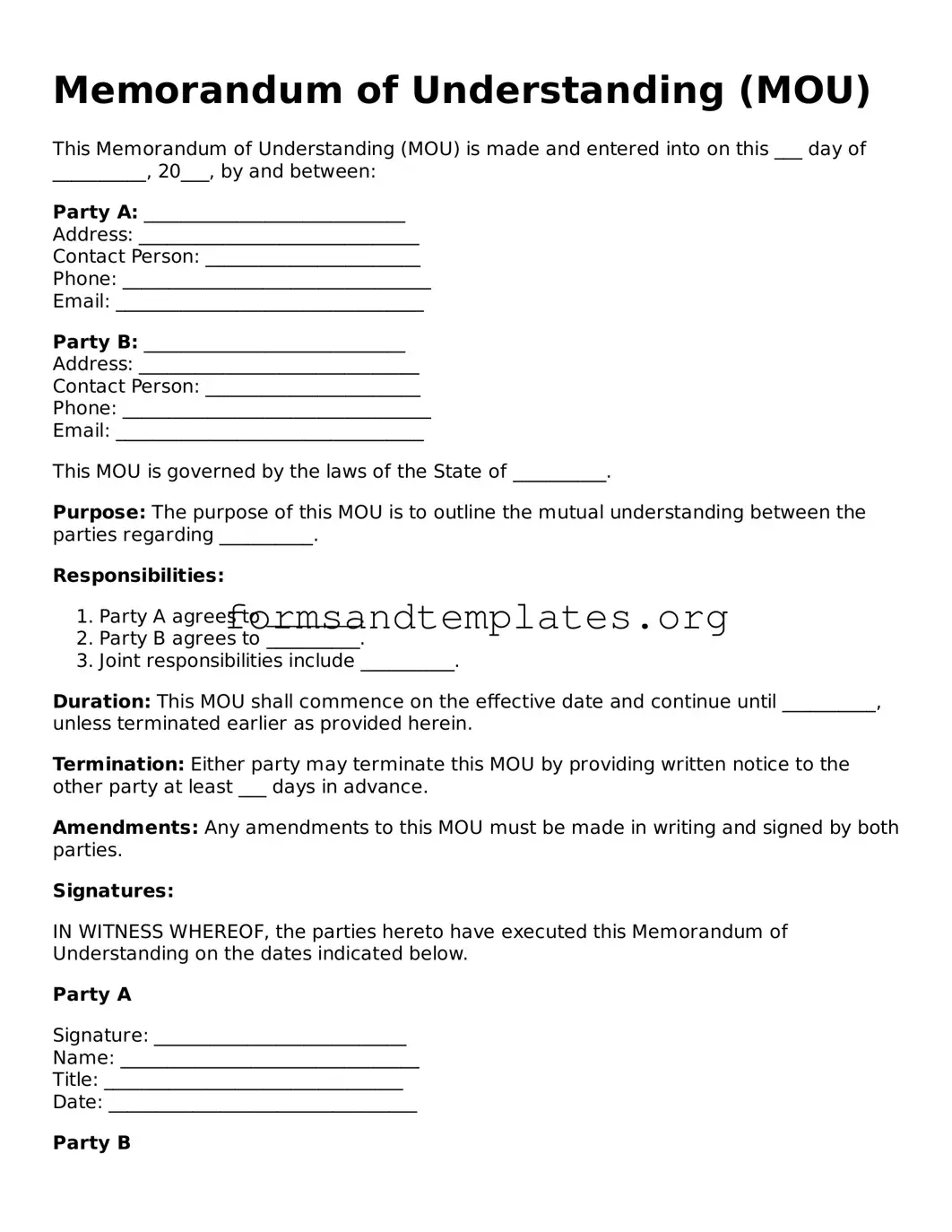Memorandum of Understanding (MOU)
This Memorandum of Understanding (MOU) is made and entered into on this ___ day of __________, 20___, by and between:
Party A: ____________________________
Address: ______________________________
Contact Person: _______________________
Phone: _________________________________
Email: _________________________________
Party B: ____________________________
Address: ______________________________
Contact Person: _______________________
Phone: _________________________________
Email: _________________________________
This MOU is governed by the laws of the State of __________.
Purpose: The purpose of this MOU is to outline the mutual understanding between the parties regarding __________.
Responsibilities:
- Party A agrees to __________.
- Party B agrees to __________.
- Joint responsibilities include __________.
Duration: This MOU shall commence on the effective date and continue until __________, unless terminated earlier as provided herein.
Termination: Either party may terminate this MOU by providing written notice to the other party at least ___ days in advance.
Amendments: Any amendments to this MOU must be made in writing and signed by both parties.
Signatures:
IN WITNESS WHEREOF, the parties hereto have executed this Memorandum of Understanding on the dates indicated below.
Party A
Signature: ___________________________
Name: ________________________________
Title: ________________________________
Date: _________________________________
Party B
Signature: ___________________________
Name: ________________________________
Title: ________________________________
Date: _________________________________
